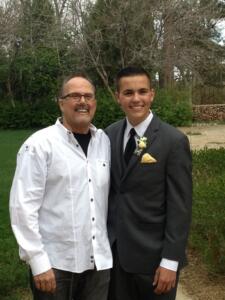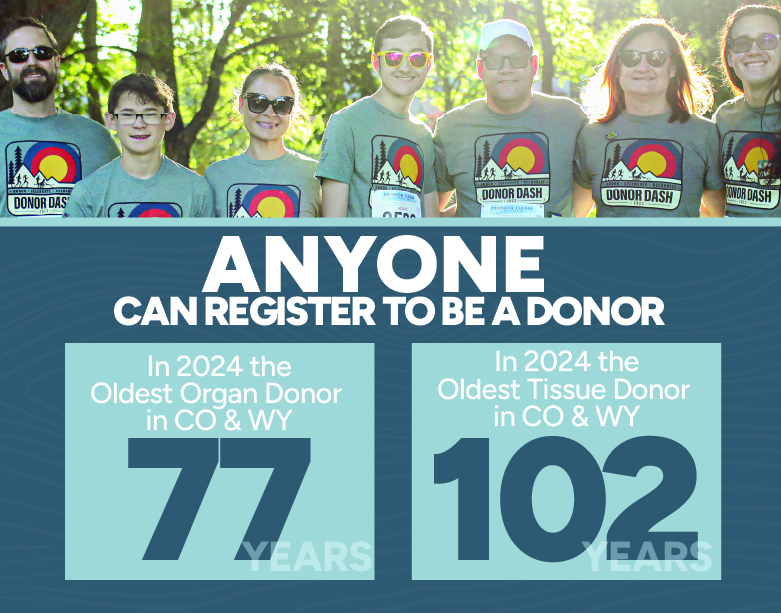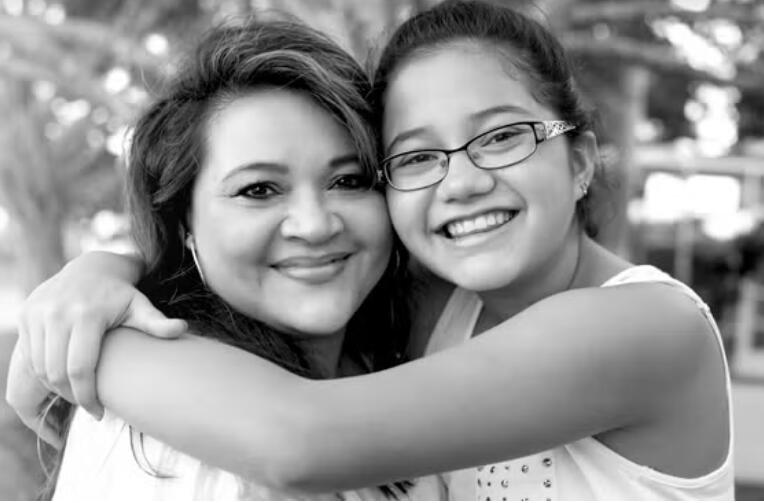Donation Essentials Blog
Understanding Lung Transplants & Lung Transplant Surgery
October is Healthy Lung Month, an observance dedicated to raising awareness about lung health and encourage people to take steps to maintain healthy lungs. Currently, nearly 1,000 people in the United States are on the waitlist for a lifesaving lung transplant. This requires lung transplant surgery. According to the Organ Procurement Transplant Network, so far in 2024, 30 lung transplants have been performed in Colorado. Nine people in Colorado and Wyoming continue to wait for a lung transplant.
When is a lung transplant needed?
When medication and breathing devices can no longer support damaged lungs or when a patient’s lung function becomes life-threatening, the patient will need a transplant. Donate Life America explains how there are many diseases that can damage lungs enough to need a transplant. Diseases include chronic obstructive pulmonary disease, emphysema, scarring of the lungs, cystic fibrosis, sarcoidosis with advanced fibrosis, and pulmonary hypertension. Unhealthy or damaged lungs can make it difficult for the body to get the oxygen it needs to survive.
Transplant process:
Step 1: Transplant Evaluation
Before a transplant, a person must undergo an evaluation to determine if they qualify. This includes both physical health tests and emotional well-being assessments.
Step 2: Lung Allocation Score
If a person qualifies for a transplant, the system assigns them a score that determines their place on the waiting list, known as the Lung Allocation Score (LAS). Many things play a part in this score, including severity of disease and organ function, age, etc.
Step 3: Waiting List Placement
After evaluators assess someone, that person will receive their placement on the waitlist. Position on the waitlist can fluctuate depending on many factors, such as if someone lower on the list is a better match than someone up higher, the way a person’s health changes, and more.
Step 4: Transplant Surgery
Once a match is made, people on the waitlist will go into surgery. The length of the surgery will depend on whether the person is receiving a single or double lung transplant.
Step 5: Post-Transplant
Following lung transplant surgery, there are many things the recipient will need to pay attention to. First, the recipient will start taking medications including anti-rejection medications. Depending on how long it takes the recipient to heal and adjust to the new lungs, they can spend up to a few weeks in the hospital. Diet, exercise, and pain management following the transplant are very important to pay attention to as well.
Meet Dean, double lung transplant recipient:

Dean Hutto, of Highlands Ranch, is a double lung recipient. Thanks to his generous donor and their family for saying “yes” to organ donation almost 10 years ago, he has been able to live life to the fullest. Dean has also become a Donor Alliance Advocate for Life volunteer to educate and inspire people to register. “I pray every day for my courageous donor family. Just think of all the life events that I’ve been able to experience with my new lungs. My kids are all grown up and beginning families. I am so grateful for the gift I received. Please say YES to organ, eye and tissue donation. Get that heart on your driver license.” – Dean
Did you know signing up to be an organ, eye and tissue donor means you have the potential to donate and save someone who needs a lung transplant? One person can save up to eight lives through organ donation and save and heal up to 75 lives through tissue donation. Show your support for Healthy Lung Month and to all of the members of our community who are suffering from lung disease. Give hope to those waiting for a lifesaving lung transplant and register as an organ, eye and tissue donor. Signing up is easy! Check the box and say ‘Yes’ the next time you get your driver license or state ID or register today at DonateLifeColorado.org or DonateLifeWyoming.org.


